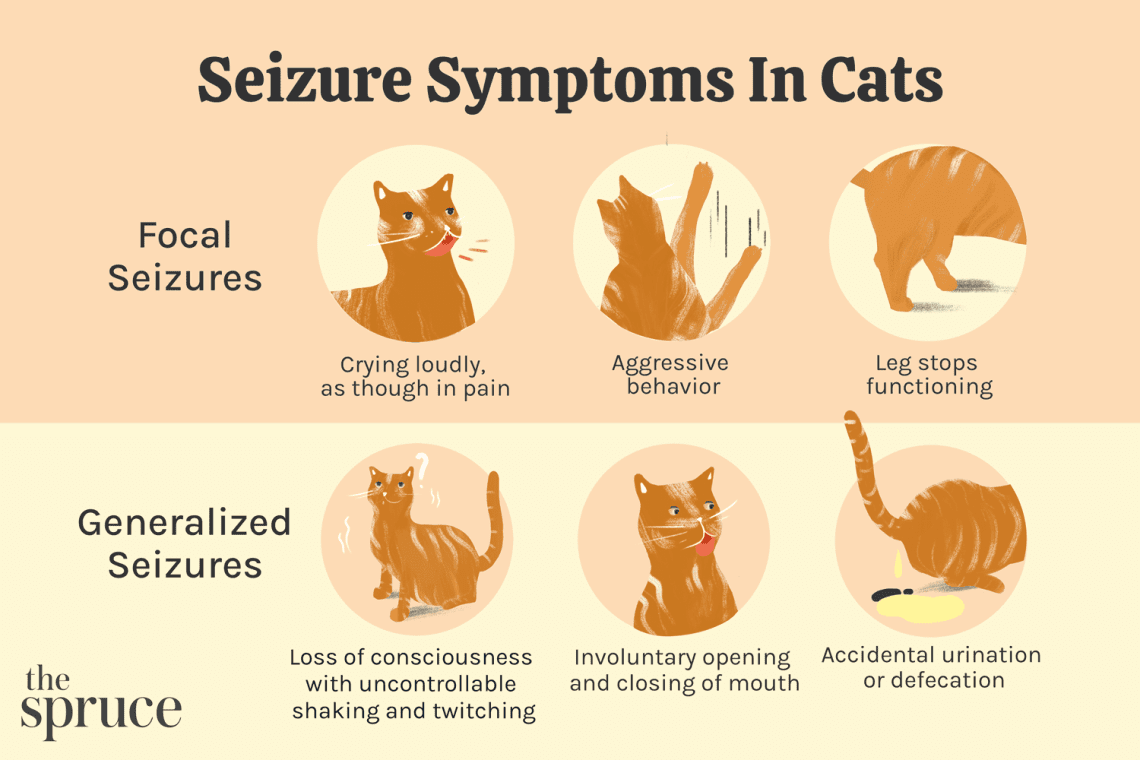
Epilepsi nan chat: poukisa li rive ak ki jan yo ede
Epilepsy in cats is a serious neurological disease that occurs when there is a malfunction in the brain. We tell you which breeds are more susceptible to this disease, how to recognize its signs and provide first aid to the animal.
contents
Types and causes of epilepsy in cats
Epilepsy is congenital and acquired. Congenital is also called true or idiopathic. It occurs due to disturbances in the development of the cat’s nervous system even before its birth. Deviations can be provoked by chronic infections of the mother-cat, closely related ties, intoxication of the cat during pregnancy, and genetic breakdowns. It is impossible to pinpoint the exact cause. As a rule, with such epilepsy, the first attacks appear in young animals.
In turn, acquired epilepsy is characteristic of adult animals. Its reasons are varied:
- head injury,
- neoplasms in the brain
- infections: encephalitis, meningitis,
- Anvi kouri ale.
- chronic diseases of the liver, heart or kidneys,
- maladi metabolik,
- anpwazonnman ak gaz.
Although there is no direct relationship of epilepsy with specific breeds of cats, doctors fix the disease more often in exotics. It is also believed that cats are more prone to seizures than cats.
Signs of an epileptic seizure
Both congenital and acquired forms of epilepsy manifest themselves in the form of seizures in approximately the same way. Before the attack itself, the cat’s habitual behavior changes: it becomes restless, may lose orientation in space, its gaze becomes motionless. This stage often goes unnoticed, although it can last up to 10 minutes.
Then the attack itself occurs, which lasts from 10 seconds to several minutes. The animal is convulsing, salivation, involuntary bowel movements or urination are possible, in some cases – loss of consciousness.
After an attack, the cat may be in a state of confusion, weakness, disorientation, or greedily pounce on food and water, and may show aggression. If the seizure lasts longer than 10 minutes or the seizures are repeated one after another, it is urgent to deliver the animal to a veterinary clinic. Otherwise, there is a risk of losing the cat.
If there is any doubt about whether the cat is really having an epileptic seizure, record what is happening on video and show it to your veterinarian. This will make the diagnosis easier.
Dyagnostik ak tretman nan epilepsi
First of all, the specialist will need a detailed description of the attack or its video, information about past diseases, vaccinations. If the animal was bought in a nursery, you can find out if the parents had seizures. As a diagnosis, you will need to pass a biochemical and general blood and urine tests, conduct an electrocardiography of the heart, abdominal ultrasound, MRI or CT of the head.
Treatment of epilepsy in cats depends on the results of the diagnosis. If the disease is congenital, the animal will require lifelong observation and treatment. A course of therapy usually reduces epileptic seizures in cats to a minimum. You can guarantee the success of the treatment only if you carefully follow the scheme prescribed by the veterinarian.
In the case of acquired epilepsy, the primary disease is treated, after which the seizures should stop. If this is not possible, the veterinarian will prescribe medication to the cat.
It is also important to correct the nutrition of the animal. There are special foods for cats with epilepsy. If the animal is fed a diet prepared on its own, you need to reduce the content of carbohydrates and cereals, and increase the protein.
Premye swen pou yon atak
If a cat has epilepsy, what should I do during a seizure? This question is often asked by pet owners. First of all, you need to ensure the safety of the cat. To do this, lay the animal on its side on a soft, flat surface, this will avoid falling. If possible, lay an oilcloth under the cat.
Darken the room, turn off the TV and try not to make any noise. Ask other family members to go to another room. Remove objects around the cat that it may hit during seizures. Do not hold the pet, this will not stop the seizure in any way, but can only lead to dislocation and additional injuries.
If the animal is lying on its side, it will not be able to choke on the tongue or saliva, so do not try to pull the cat’s tongue out. Just be there to control what is happening. If possible, record the attack on video. Record how long it lasted.
Prevansyon
Congenital epilepsy cannot be prevented, but simple recommendations will help protect the animal from acquired epilepsy:
- Visit your veterinarian regularly, even if your cat looks healthy.
- Do all the necessary vaccinations according to the schedule and antiparasitic treatments for the animal once every three months.
- Keep medicines, powders and other household chemicals out of the reach of the animal.
- Don’t let your cat run outside.
- Install window guards.
- Give your cat a complete and balanced diet.
If your cat is showing symptoms of epilepsy, don’t hesitate to contact your veterinarian. Properly prescribed treatment and care will help minimize dangerous attacks and prolong the life of the animal.





